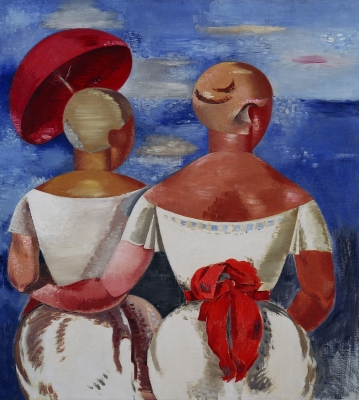The Riga Group of Artists declared:
“All of the recent years have been really tragic for our art; it seemed that in this sphere, too, we were approaching absolute ruin. Art no longer had any place in our society. In order to fight destitution and surrounding indifference, the artists needed great endurance and self sacrifice. We are no longer satisfied with the simple depiction of real life. Currently, all our strivings are directed towards revealing personality. It is not life, objective, outward life, that we now wish to present through our work, but our own individual character, our spiritual essence.”
This first show marked a radical turning point in the quest for means of expression in Latvian painting, initiating a historic process of reassessment of values and thus earning legendary renown.
Art historian Boris Vipper argued that the group
“belongs among the most vivid phenomena in Riga art life. The group’s artists were unified by an undeniable commonality of stylistic interests, and nevertheless each of them has retained an independent concept of their own. All of the artworks indicate a serious, profound attitude towards art. Without exaggeration, we may say that the latest word in modern Latvian art is heard most convincingly and most comprehensively at exhibitions by the Riga Group.”
The Riga Group of Artists lost its independent status in 1938, with the founding of the Latvian Chamber of Literature and Art, within which the creative art groups continued their existence only as subdivisions of the Fine Art Section. These, too, were abolished by the Soviet authorities in 1940, and so the Riga Group of Artists ceased to exist as a circle of likeminded individuals.
Exhibition curator Dace Lamberga
Exhibition design Anna Heinrihsone
Project manager Ieva Kalnača





